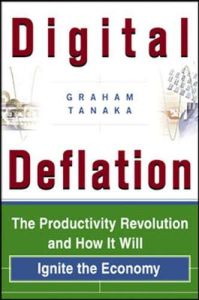
Digital Deflation
The Productivity Revolution and How It Will Ignite the Economy
Recommendation
Imagine that companies throughout the economy had access to new, better technology every year, and made better products without raising prices - in fact, while cutting prices. Now imagine that the regulators and policymakers used outmoded measurements and models that ignored these quality improvements and this downward price trend. Imagine that the Federal Reserve saw a risk of rising prices even when prices were falling. Imagine that the Fed kept tightening the economy unnecessarily, sending interest rates up, slowing growth, inducing stock market crashes and recessions, and doing the opposite of what it should. If you can imagine all this, you have a picture of U.S. economic reality as seen by author Graham Tanaka. It’s a picture no one, especially investors, should disregard. getAbstract.com found his book immensely interesting - too long by half, with too many repetitious references to his previous publications (perhaps just his way of saying, "I told you so"), often tendentious and labored, but not to be ignored. Just be cautioned: this sounds somewhat like the bubble speak we heard at the end of 1999 and the beginning of 2000 - other times of strong growth without inflation.
Summary
About the Author
Graham Tanaka, C.F.A., is president, chief investment officer and chief economist for Tanaka Capital Management, Inc., and the TANAKA Growth Fund. He has held senior level positions with Morgan Guaranty Trust and Fiduciary Trust Company of New York, and serves on the board of directors of TransAct Technologies.








Comment on this summary